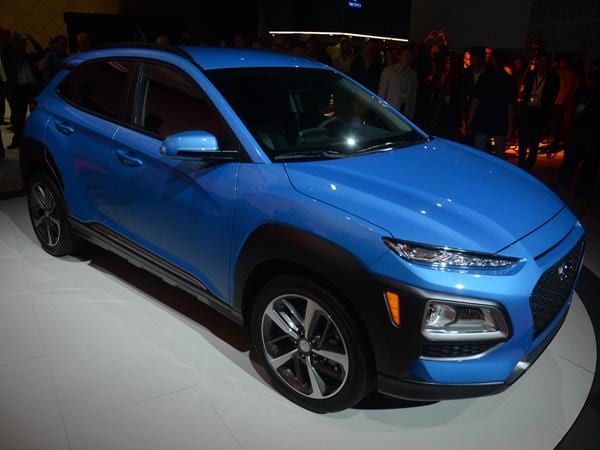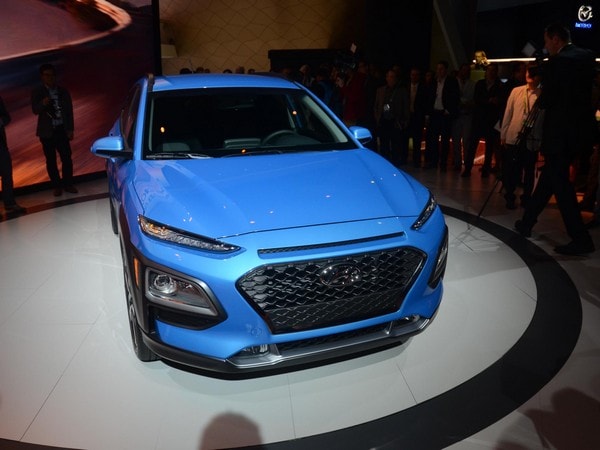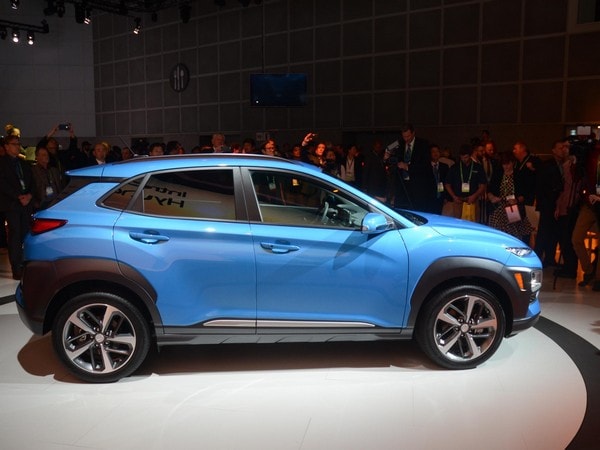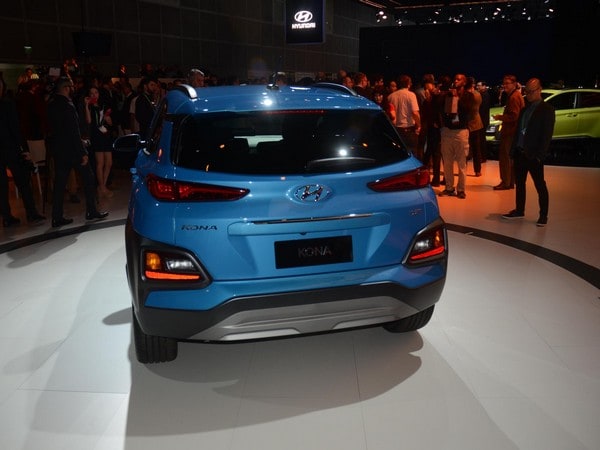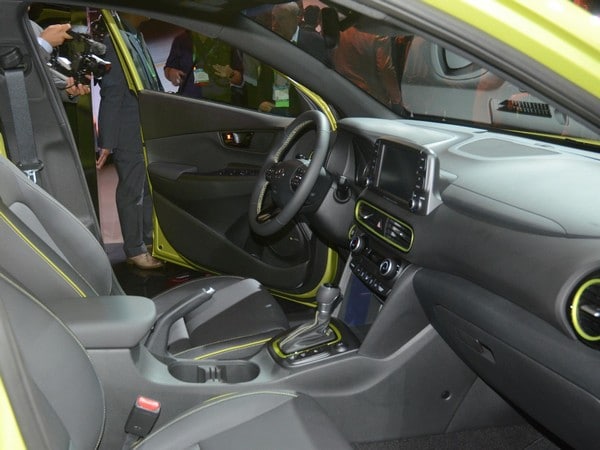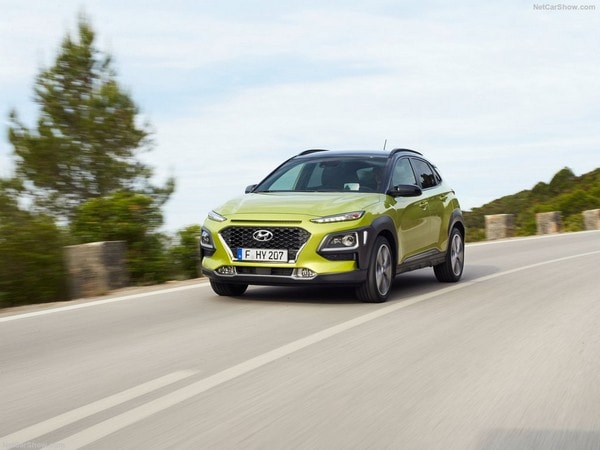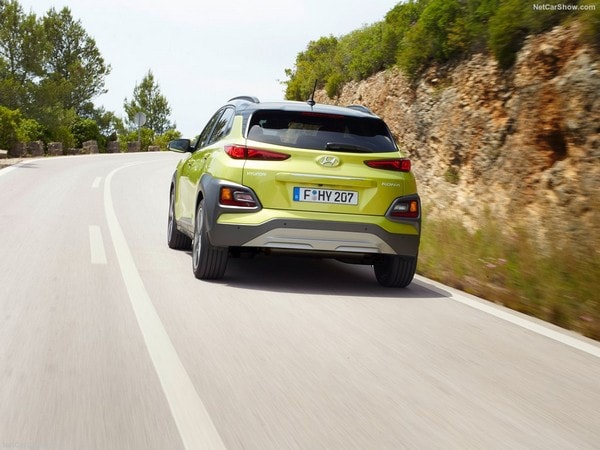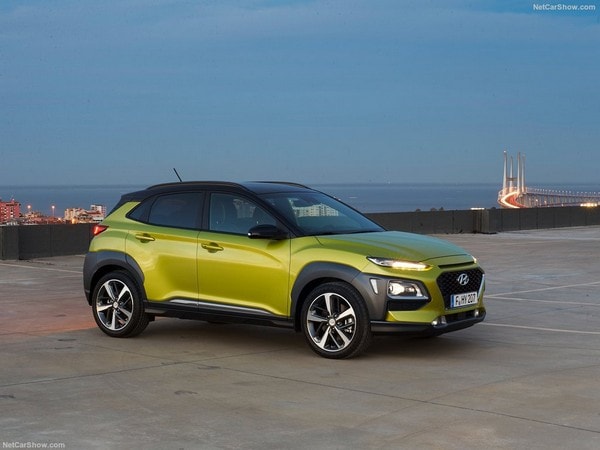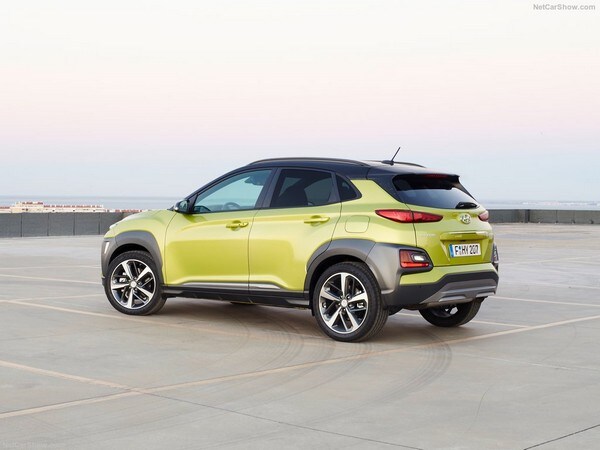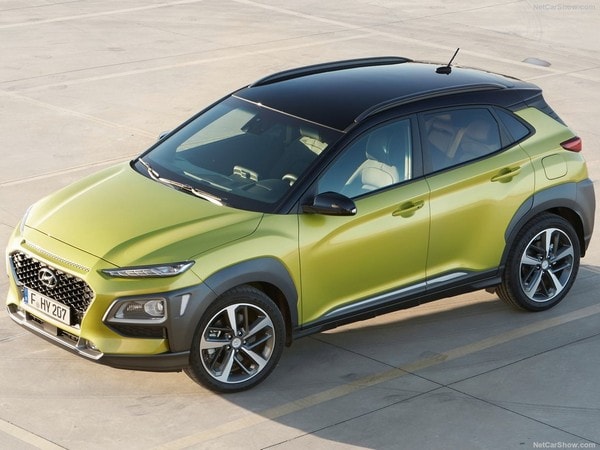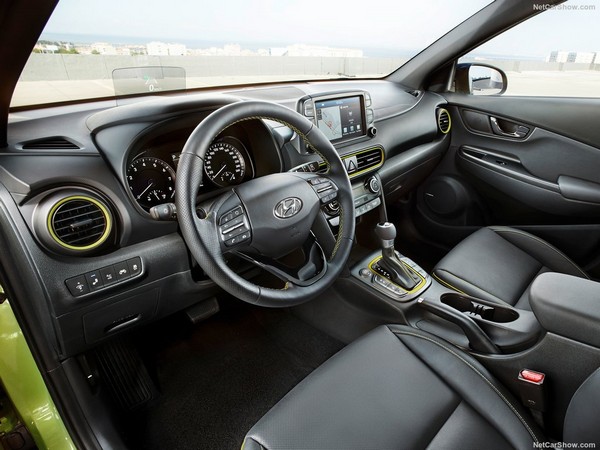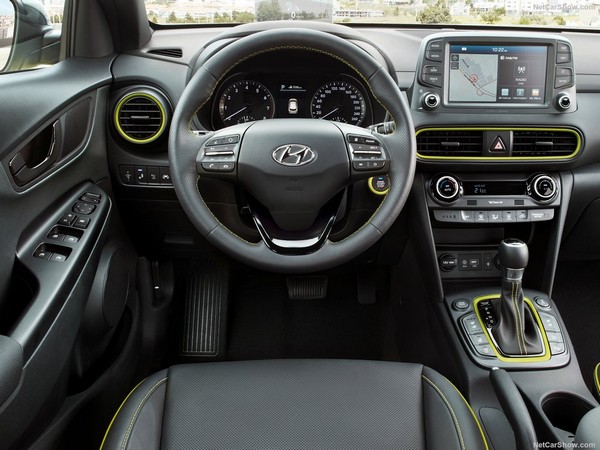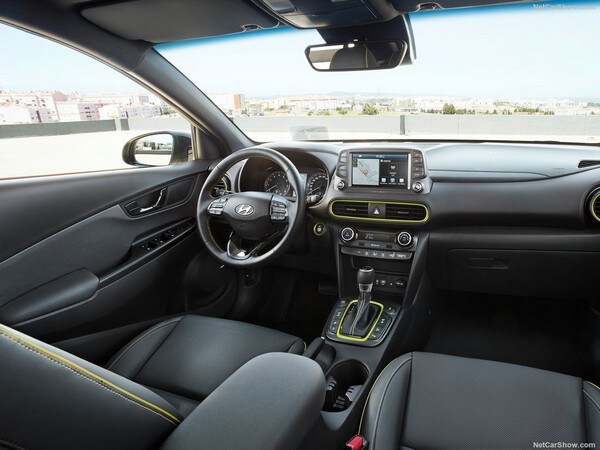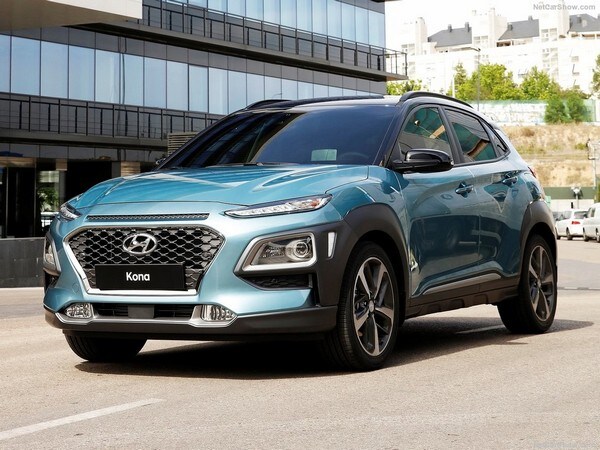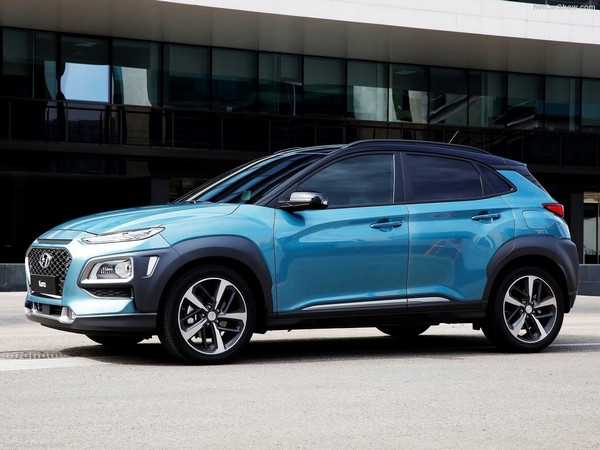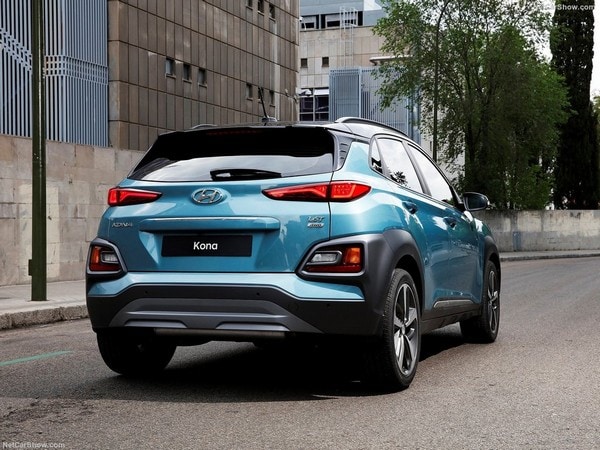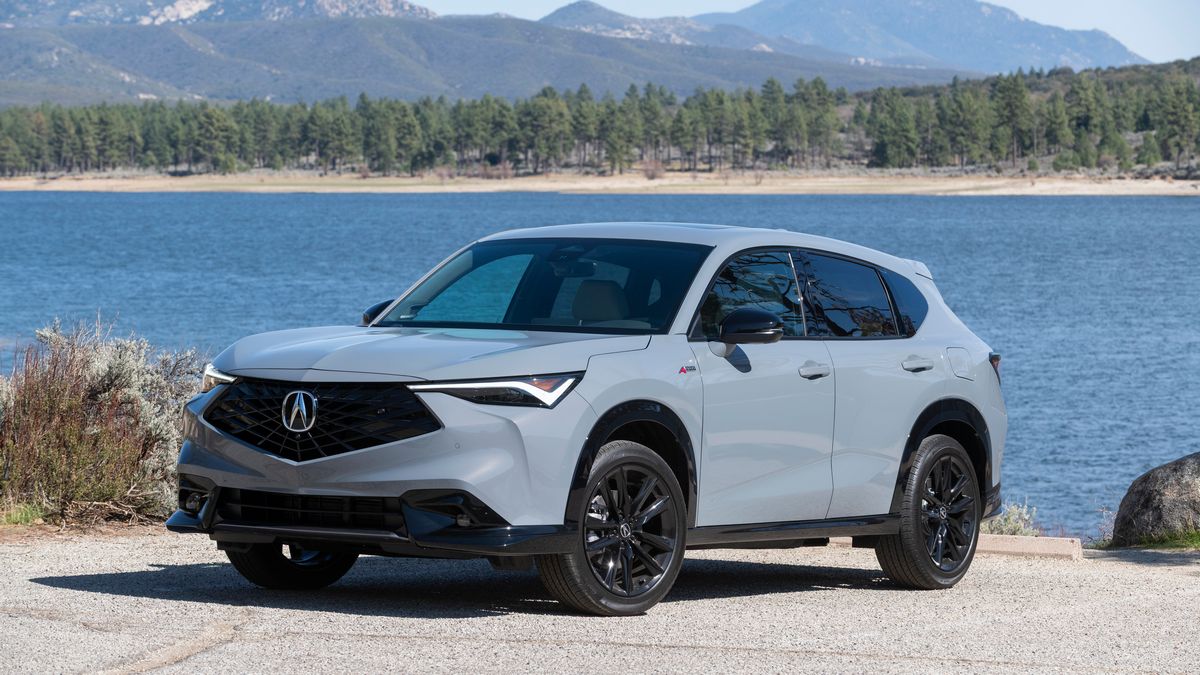Update: You can now read our first review of the 2018 Hyundai Kona
In a market increasingly dominated by crossovers, the balance of Hyundai’s product portfolio has been heavy on the wrong side of the street with seven passenger cars and just three SUVs. As a result, Hyundai’s U.S. market share has declined amid a change of North American CEOs and a scramble in the product development department back in Korea.
The result is a plan to fortify Hyundai’s North American vehicle menu with eight new or fully redesigned SUVs by model year 2020. Presented at the Los Angeles Auto Show, the 2018 Hyundai Kona is the point vehicle in the company’s SUV blitz. A subcompact, it will face vigorous competition in a busy market segment.
Distinctive style
The best bet for success is styling, and that’s obviously where the Hyundai team put a lot of chips. As a group, subcompact CUV styling tends toward uninhibited, and the Kona has fewer inhibitions than most.
The individualistic champ—the Soul—comes from Hyundai’s Kia subsidiary, and seems to have been an inspiration for the Kona team, at least in terms of letting go of constraints. The shape may be a little more compact CUV mainstream than that of the Soul, or Nissan’s zany Juke, but it still stands out for its two-tone paint and extensive cladding—fender flares that wraparound front and rear, and rocker panels. Like others, it sports LED DRLs, parking, head- and taillights.
It also stands out, at least within the Hyundai-Kia milieu, for its structure. The Kona represents a new architecture, with a hefty percentage of high-strength steel (52 percent) from Hyundai’s in-house steel works, an architecture that will undoubtedly be employed in future vehicles. Like everything in this segment it’s basically a front-drive chassis, and like most (the Soul is an exception) it will offer an all-wheel drive option.
Also: See the 12 Kelley Blue Book Best Buys of 2018
Like the Soul and the Juke—but unlike many others—the Kona will offer two engine options. The standard powertrain will be a 2.0-liter four, 147 horsepower, 132 lb-ft of torque, paired with a 6-speed automatic transmission. The upgrade will be a turbocharged 1.6-liter four (175 hp, 195 lb-ft) with a 7-speed dual-clutch automatic. Both combinations can be found elsewhere in Hyundai’s vehicle lineup.
While the Soul turbo and NISMO version of the Juke deliver livelier power-to-weight ratios, the turbocharged Kona figures to be one of the quicker rides in its class.
A 1.6-liter turbodiesel is expected to join the Kona engine inventory in 2019. An EV version is also in the works for 2019, but whether it will reach U.S. showrooms is an open question.
Suspension components include struts up front and a beam axle in the rear for front-drive models, and a multi-link rear setup with all-wheel drive.
Attractive and roomy
Interior features are nicely appointed, with materials including the option of leather trim seats. Cloth upholstered seats sport nifty houndstooth inserts, and the seat bolsters are deep enough to lend a sporty appearance. There don’t seem to be any mysteries or quirks to the control layout. And the 102.4-inch wheelbase, long in this class, makes for adult-habitable rear seats and a 19-cubic-foot cargo hold behind the seats.
Telematics look to be cutting edge for this class, with a touchscreen at the top of the center dash—7.0-inch standard, 8.0-inch optional—and the availability of navigation, Apple CarPlay, Android Auto, 4G Wireless, a wireless charging pad, and Hyundai’s Blue Link connectivity. There’s also an available 8.0-inch color head-up display, on a screen that pops up in front of the driver.
Also: Check out all of the latest news from the L.A. Auto Show
The driver-assist features that are proliferating with more expensive vehicles are steadily trickling down to the subcompact class, and the Kona makes a number of them available: forward collision alert with auto emergency braking; lane departure warning and lane-keeping assist; blind spot monitor; rear cross-traffic warning; and automatic high beams.
Kona will be offered in four trim levels. SE, SEL, Limited, and Ultimate. Hyundai wasn’t ready to discuss pricing specifics at the L.A. debut, but expect the range to be competitive in the subcompact SUV class—an MSRP range of about $19,000 to $28,000 or $29,000. Also anticipate a typical Hyundai edge in terms of content value, plus the advantage of its 100,000-mile powertrain warranty.
